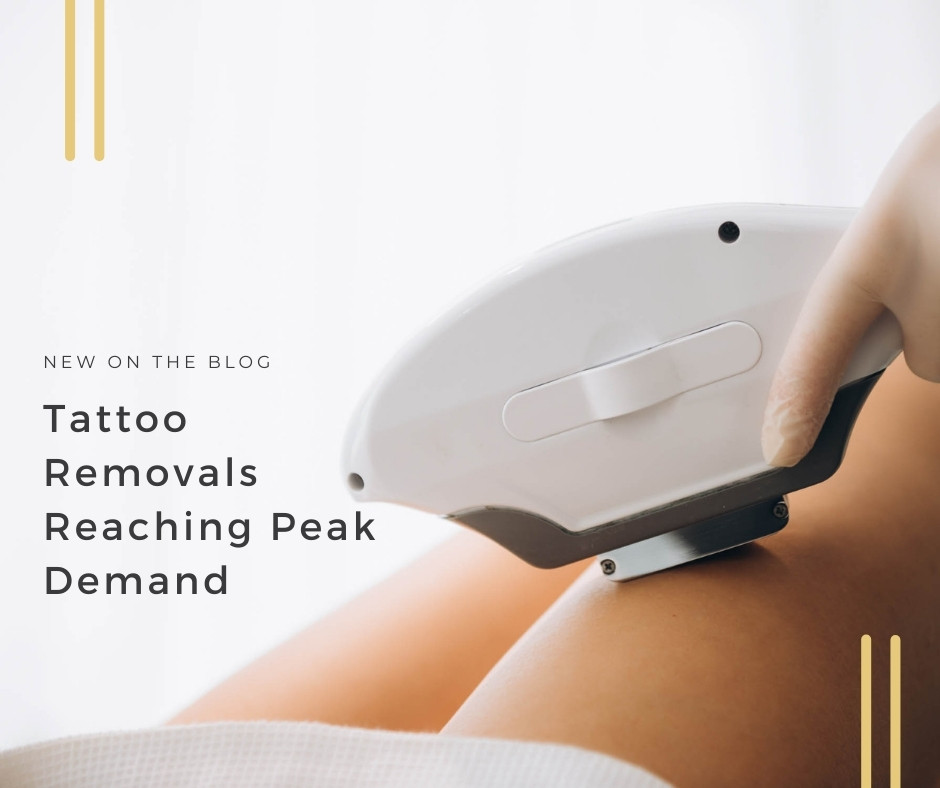A recent article from the Univest Public Media Center declares that tattoo regret has become big business—and that the number of people requesting tattoo removal is about to reach record highs. At VIDA, we exclusively use MedLite laser technology for tattoo removal because it can treat all colors, all depths, and even the oldest of tattoos. If you have some ink you’d rather undo, tattoo removal technology has come a long way. It is now quicker, safer, more effective, and more comfortable than ever before. If you were able to undergo getting that tattoo, today’s tattoo removal technology ensures you will also be able to handle removing it. But why exactly are tattoos moving out of fashion?
According to the author of the Univest article, Harri Leigh, about 45 million people in the United States have at least one tattoo. This is due in large part to the acceptance of tattoos as well as the skill of various artists. Now that it is acceptable in many industries and communities to have tattoos, in the past couple of decades more and more people have been able to get that ink they’ve always thought about. However, humans are by nature fickle creatures. The odds of loving a design for decades are slim to none in many cases. Simply put, when more people are getting tattoos, there’s going to be more people who want to have them removed.
The State of Tattoos
In 2016, about 30 percent of American adults had at least one tattoo. That’s an increase of 20 percent from just 2012 (Harris Poll). Most people with tattoos are young adults, with 18 – 25 year-olds making up 36 percent. However, 26 – 40 year-olds comprised 40 percent of those with tattoos (which makes the definition of a “young adult” quite broad). The exact percentage of people who get tattoos and end up regretting them varies depending on the study, but generally half of people with tattoos express some regret.
Of course, some “experts” consider the percentage much higher. Leigh quotes one dermatologist as saying, “The majority got the tattoo, they did not realize that this is what they were in for, and just hate it.” This might not be the actual “majority” opinion, but consider the demand for tattoo removal and it’s clear that at least some people feel this way. From 2005 – 2015, the revenue for tattoo removal increased 440 percent. It is currently on track to increase another circa 10 million dollars in the next year. Who is getting tattoos removed is also changing.
The History of Tattoo Removal
Tattoo removal is not brand new, but the technology behind it is. In the 1990s, tattoo removal was available to some degree (though typically only black/gray tattoos could be removed, and even then “lightened” is probably a better word). According to Leigh, during this era it was servicepeople who wanted their ink removed in order to start a new life. However, today 70 percent of tattoo removal patients are women on the cusp of 30. Typical reasons cited are “personal regret” and professional pressure.
No matter your reason for wanting to remove a tattoo, MedLite technologies offer the best and fastest means of doing so. However, this is never a one-and-done process. Every person requires multiple sessions for tattoo removal, with more sessions needed for certain colors, older tattoos, and ink that sits deeper in the skin. Tattoo removal works via a laser that targets the ink particles (or any unwanted pigmentation, such as a mole), then “shatters” the pigment. Next, the body naturally absorbs and expels the shards in the days and weeks following the appointment. You will notice a change in the ink after each appointment, but that is just the shatter effect. It will take some time for the body to expel it.
Gone are the days when a tattoo was forever. Whether you simply want to erase some art you regret or perhaps make room for some new, better ink, tattoo removal can help you achieve the look you want. To learn more about MedLite technology for tattoo removal, connect with VIDA today. Call the office or, for the quickest response, simply complete the online form now.




